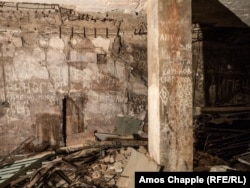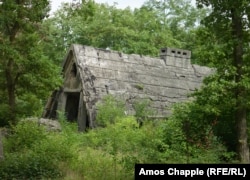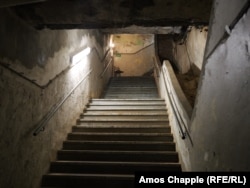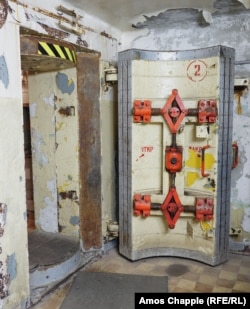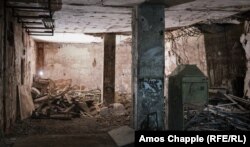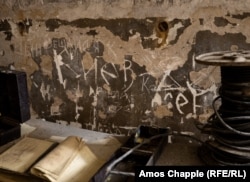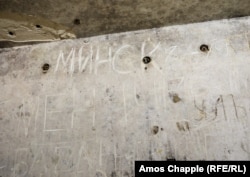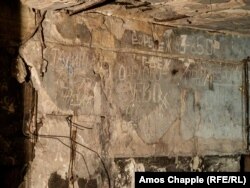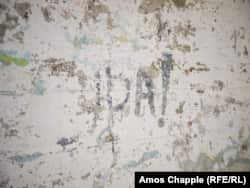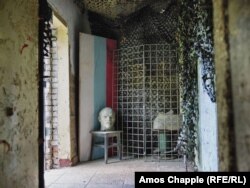Soldiers from across the Soviet Union left their mark on the walls of a top secret facility built by the Nazis.
This graffiti, deep beneath a German forest, is a little-known remnant of the Soviet presence in the heart of Europe.
The graffiti lies beneath a once-secret Nazi communications center in forests close to Zossen, around 35 kilometers south of Berlin. The building seen above is one of several concrete structures near Zossen that once concealed a Nazi communications center code-named Maybach.
The Nazis completed the Maybach site (pictured) just before World War II to safeguard their military communications. While the central Berlin telephone exchange could easily be destroyed by air raids, Maybach used underground cables and was heavily reinforced against aerial attacks. Additionally, the site’s above-ground structures were disguised as large country houses.
After the Soviets captured Berlin in 1945, they destroyed most Nazi facilities around Zossen, but one site -- known as the Zeppelin bunker, which was connected to Maybach with underground tunnels -- remained largely intact.
The photo above shows one of the entrances to that Nazi-era bunker.
As the nuclear arms race raised tensions in the 1950s and '60s, the Kremlin reopened the Zeppelin bunker as a military intelligence base and equipped it to withstand a nuclear strike. This 2-ton Soviet-made blast door (above) was fitted to a Nazi-made entranceway.
Deep underground, long tunnels lead from the Zeppelin bunker to the destroyed Nazi-era Maybach communications facility. In many places, Soviet-made machinery is visible today.
This electrical box has Russian-language instructions.
In the bunker’s deepest point, 18 meters underground, Soviet commanders cleared this space for a shooting range. Inside the shooting area, Soviet troops were either left unsupervised or permitted to paint and scratch graffiti into the walls.
Most of the graffiti is simply the names of cities where individual soldiers hailed from. In the photo above, a soldier wrote “Kiev,” using the Russian spelling for the then-Soviet Ukrainian city.
Soviet soldiers had famously covered Berlin's Reichstag in graffiti in 1945.
Other soldiers in the bunker added years, perhaps noting their periods of service in communist-controlled East Germany. This graffiti says “Minsk 87-89.”
This wall notes the Russian cities of Orekhovo-Zuyevo and Voronezh, and one soldier wrote “Stalingrad 75-77” (upper left). Stalingrad was the site of a key Soviet victory over Nazi forces in 1943, but the city was renamed Volgograd in 1961.
“Hurrah!” wrote one soldier.
The names of cities in today’s Kazakhstan, Belarus, Ukraine, and Russia were etched into this wall.
A local guide said troops inside the bunker were left almost entirely in the dark as turmoil swept the Soviet Union ahead of its final disintegration in 1991. This lawn mower is one of a handful of relics inside the bunker that was left behind after Russian forces withdrew from Germany in 1994.
This bust of Soviet founder Vladimir Lenin was also left behind. It now stands at one of the entrances to the Zossen bunker, set next to the flag of an independent Russia.





